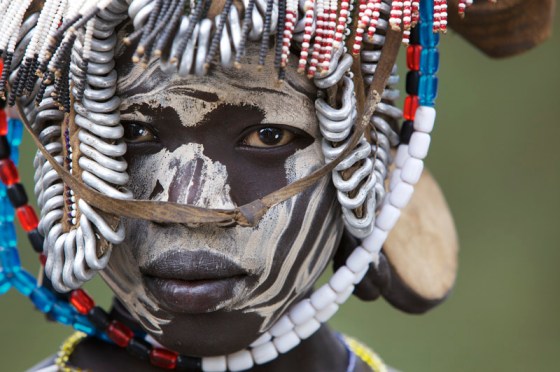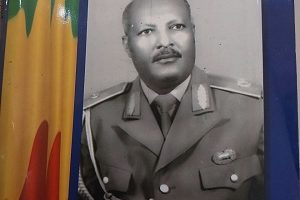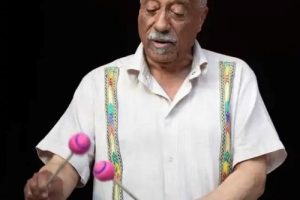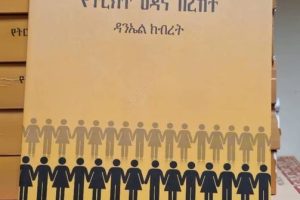
BY STAFF REPORTER
Ethiopia is a multilingual nation, with around 80 ethno-linguistic groups, in our “This is Ethiopia” edition we just want to introduce the Kara Tribe. The Kara people are Omotic language speakers as well as known for their many practices in their daily life.
According to their oral tradition, the Karo believe their roots are as herdsmen who migrated to the mountains of the Hamar and Banna peoples. They lived there for some time until one day their livestock disappeared in search of water. The livestock eventually returned, but when they disappeared again, the Karo followed them. This is how they discovered the existence of the Omo River and came to settle on its banks.
Kara ethnic groups are famous for their body and face painting, the Kara or Karo people are a Nilotic ethnic group that resides along the east banks of the river in southern Ethiopia.
With an estimated population between 1,000 and 3,000, the Kara tribe is one of the smallest tribes amongst the Omo valley tribes. They practice flood retreat cultivation, grow maize, sorghum, and beans. They fish, breed cattle and goats, and they largely rely on the rivers yearly flood for sustenance.
The Kara and Hamer are closely related and they speak virtually identical Omotic languages. Their tribes are of the same ancestry and some of their cultural practices intertwine, making room for a rich cultural history together.
Their neighbors include the Bana, Hamer, Bashada, Nyangatom, and Mursi and they have traded amongst each other for beads, cloth, cattle, and food.
The Kara tribe is well renowned for their artistic nature and among other things, has distinguished themselves from the neighboring tribes by excelling specifically in body and face painting.
Daily, they paint themselves with white chalk, colored ochre, yellow mineral rock, charcoal, and pulverized iron ore. The painting is done through an elaborate process with designs, ranging from simple fine dots, stars or lines, to animal motifs such as the spotted plumage of a guinea fowl, or a myriad of handprints covering the torso and legs. These symbolic, ornamental, and artistic expression practiced by both sexes is in a bid to appear more attractive to the opposite sex.
Beauty is an intricate part of the Kara tribe. Kara men both use clay to construct elaborate hairstyles and hair dress which signify status, bravery, and beauty. A part of the hairstyle is made from ear to ear, the front portion of the hair is braided which frames the forehead, while the rest of the hair is drawn back to attach ostrich feathers. Red, white, and black colors are of mystical and legendary significance.
A man that wears a grey and red-ochre clay hair bun with an ostrich feather, which is either, killed an enemy from another tribe or a dangerous animal like a lion, or a leopard. This grey and red-ochre clay can be worn for a period of up to one year after the kill and it takes up to three days to construct. Large beads were worn around a man’s neck also signifies a big game kill.
Body scarifications for the Kara women are considered particularly sensual and attractive especially if the cuts are made deep into their chests and torsos, and ash is rubbed in erecting a raised effect over time, thereby enhancing sexual beauty.
These lacerations and cuts are all done for beauty reasons as women with these types of scars are considered mature and attractive. The Kara woman’s hair is greased with red clay and cut into a short skullcap, drape colorful beads around their necks, and wear only a loincloth made from hides and decorated with beads and cowries.
Cultural Ceremonies
After the harvest, important festivities and ritual ceremony, combats between the clans take place and men cover their body and face with ashes mixed with fat which symbolizes virility.
The ceremonial combats are of great importance to Kara Tribe Ethiopia because they enable men to exhibit their beauty and courage. Neighboring villages sometimes travel all night to grace these rites of passage and participate in the celebrations.
Courtship dances are held frequently and most times, the outcome results in future marriages. Similarly to the Hamar and Bashada tribe, the Kara practice the Bula, or the Bull-jumping ceremony which signifies the coming of age of a young man.
The young man has to prove his readiness to manhood by successfully jumping over rows of cattle six to seven times in a row. While the successful boys qualify to marry(as long as his older brothers are married) and earn the right to appear in sacred places with elders, the boys who fail are disgraced and given the chance to try again next year.
The Kara is part of one of the ethnic tribes in Ethiopia whose traditions and ways of life have remained largely untouched by the modern world. The Lower Omo Valley in southern Ethiopia is home to over a dozen different tribes and despite the age of internet revolution and globalization, the customs of the Omo tribes continue to survive and remain untainted.
Source: Absolute Ethiopia Tours
The Ethiopian herald January 1/2021





